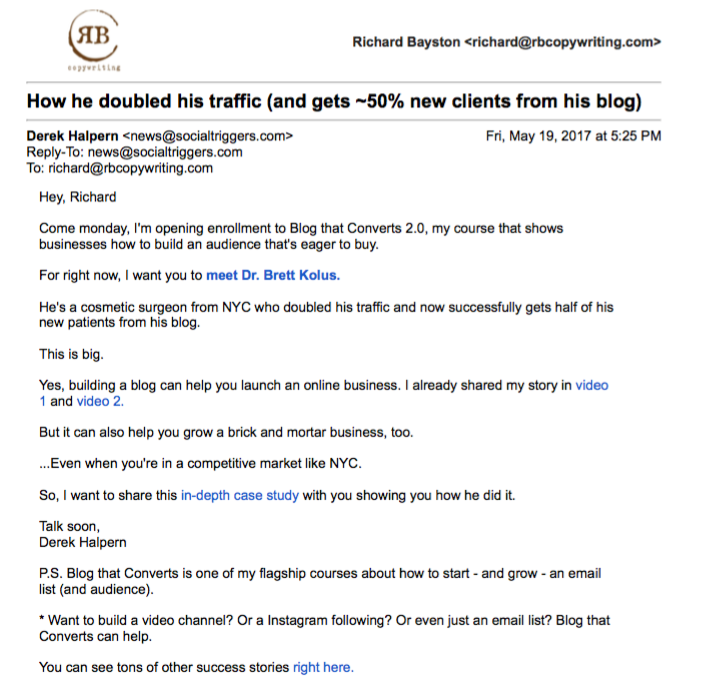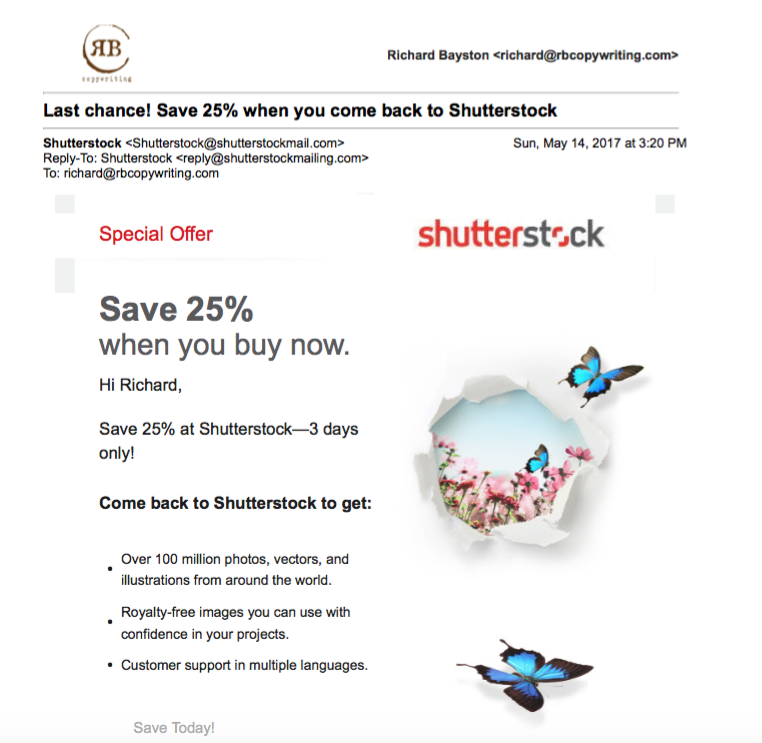6 Email Subject Line Templates That Will Get Your Emails Opened
May 31, 2017 6 min read

Back in 1963, David Ogilvy reminded his profession that ‘on the average, five times as many people read the headline as read the body copy. When you have written your headline, you have spent eighty cents out of your dollar.’
Email open rates average 18.2% for ad agencies, rising to 27.3% for car and transport businesses.
So it looks like Ogilvy is still reliable. Your subject line, like his headline, is 80 cents of your email dollar.
And it counts: 47% of readers open emails based on subject line alone. 70% will dismiss you as spam on the same basis. It’s the biggest variable you can control.
Great subject lines can impact your deliverability and your open rate, and open rates count because they’re the first step to conversions. Of the people who don’t open your email, 100% don’t convert.
Upping open rates has a dramatic effect on ROI. Want to see what it could do for yours? Check out the email ROI calculator.
Our subject lines have to make it through spam filters, and they have to engage readers and ‘sell’ them the rest of the email.
Here are six email subject line templates that will do both.
1: The Reason Why
Why nobody is actually reading your content – and what you can do about it
- Inbound.org
‘Reason Why’ subject lines combine two powerful effects: curiosity and self-interest. They convince readers that they should do something, and offer compelling reasons. (Bonus points for numbering the reasons.) The desired behavior speaks to self-interest. The reasons speak to curiosity. Together, they’re an effective combination.
Numbered reasons (‘5 reasons why,’ ‘Top 3 reasons’) reassure readers that the email won’t be too long to read in the time they have or guarantee meaty, usable content a couple of clicks away.
But single reasons can work too: ‘the REAL reason you should…’ or ‘the number one reason startups fail’ subject lines offer insider knowledge.
Try these templates:
- The REAL reason {undesirable outcome relevant to audience}
Example:
- The REAL reason your emails aren’t getting opened
The top X reasons {undesirable outcome} and how to avoid them
Example:
- The top 6 reasons projects fail and how to avoid them
2: The Offer
Last chance! Save 25% when you come back to Shutterstock
- Shutterstock.com
If you want something, ask for it. Sales people tell each other all the time to ask for the sale. Don’t be scared to do it in your emails.
Making the offer more powerful is partly a matter of segmentation: don’t offer suburban soccer moms 10% off Iron Maiden, and don’t offer college kids lower rates on retirement insurance. Copywriting can’t fix this.
But there are things we can do to make an offer more compelling.
If your 10% off will be there forever, no rush. That email slips down the inbox, never to be opened. If it’s all over in 12 hours, better check it out now.
Try adding a call-out. Emailing runners saying ‘10% off tights for your next marathon’ or ‘Kayakers: save 40% on paddles – this weekend ONLY’ hits all the right buttons, making your recipients feel like you’re talking right to them. It’s like hearing your name over the PA in the store: ‘Hey, that’s me!’
Try these templates:
- X% off {targeted product} this weekend
Example:
- Get 22% off skiwear this weekend
or
- {Call-out}: save X% when you {desirable action} – ends in {time}
Example:
- Marathoners: save 22% when you sign up – ends in 12 hours
3: The Question
What can you afford?
- Zillow
Try these templates:
- How much {desirable outcome} can you get for {low sum}?
Example:
- How much car does $500 buy you?
Or:
- Can you afford to {not do desired action}?
Example:
- Can you afford to ignore these 17 email marketing stats?
4: The Urgency
Time is running out to save $400 on B2B Marketing Forum
- MarketingProfs

But we are doing something effective.
It’s effective because it pushes them toward making a decision now, not waiting til later and then forgetting about it. But they might decide they don’t really want it. So use urgency with purchase-ready recipients.
There are several ways to achieve the urgency we want.
We can focus on a deadline. Tell recipients they have just 4 hours, or that the sale ends Friday.
Or we can inject some urgent language into the subject line. Like ‘final,’ ‘last,’ ‘go,’ ‘now.’ Even just telling customers to ‘hurry’ can work. These words trigger arousal states that make engagement more likely.
Try these templates:
- Hurry – sale ends at {deadline}
Example:
- Hurry – sale ends at midnight Friday!
Or
- Last chance to get {offer} – {time} to go!
Example:
- Last chance to get your subject line templates – 4 hours to go!
5: Too cool for a subject line
Hey

Every subject line in your audience’s inbox is making an effort. Sometimes it can feel like all that engineered urgency and corporate targeting is just trying too hard. Subject lines that stand out by being human give you an in.
They work best when you’re looking for engagement, not direct sales, but even a sales or outreach email often gets opened more with a ‘Just a quick idea’ subject line than when it’s clanking along under a pile of caps, punctuation and dollar signs.
It’s not about being super short – though that does visually distinguish your email in an inbox. It’s about being a human voice.
Your”So I was thinking…” subject line sounds like a real person, and it makes people want to know what’s on your mind in a way that no superheated special offer could.
Try these templates:
- {Name}, quick question…?
Example:
- Jonathan, quick question…?
Or:
- Hey {Name}, talk to me about {subject}?
Example:
- Lou, talk to me about your conversion rate?
6: My Story
How he doubled his traffic (and gets ~50% new clients from his blog)
- Derek Halpern
What’s better than telling me how I should do something?
Telling me how you already did it.
Now I know that you know what you’re talking about. You’re qualified to show me the way, and your experience is just as useful as your advice.
(I’ve learned a lot from asides in blog posts that say stuff like ‘one thing I noticed was that people seemed to…’ At least as much as I ever have from advice saying ‘do this because figures.’)
Subject lines like this let you make specific, factual offers. You’d like to learn how to double your traffic and get half your business as inbound off your blog, right?
But you make those offers in a way that feels natural, gripping and un-salesy.
And we love a story. It’s part of being human. What film or TV show isn’t about someone overcoming adversity to get what they want?
Not usually more blog traffic, granted, but the point remains the same. We can’t resist narrative. Gear it to our special interests and promise us a payoff at the end? Hooked.
Try these templates:
- How I turned/went from {disadvantageous position} into a successful business
Example:
- How I went from a mental asylum to running a successful business
Or:
- How {Name} {outsize success} in {tiny time period} using {tool or technique}
Example:
- How Michael doubled conversions in just three weeks using persuasive copy
Conclusion
When you’re trying to make sure your emails get opened, your subject line is the most important tool you can wield. Some of what makes it work is getting to know your audience, and it’s tough for even the best subject line to work ‘uphill’ against the results of poor segmentation.
But if you’re all set otherwise, these 6 email subject line templates should get your copy, offers and images where they need to be: in front of your audience.
Have you received any awesome or horrifying subject lines? Share them in the comments below – I would love to hear about them.







